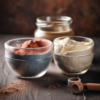Welcome to the skincare world, where we’ll unlock the secrets to keeping your body’s first line of defense in optimal condition. This article serves as your compass to navigate the skincare world with a combination of scientific insights and practical wisdom. We’ll explore various aspects of skincare, including understanding your skin type, sunscreen science, exfoliation, the importance of maintaining pH balance and selecting the ideal moisturizer. We’ll also explore the connection between your diet and skin health, exploring natural remedies and prescribed treatments for specific skin concerns. Whether you’re a newcomer to skincare or a seasoned pro, we aim to provide you with the knowledge required for achieving and maintaining radiant and healthy skin.
The Significance of Healthy Skin
Your skin, the body’s most expansive and remarkable organ, is a phenomenon. Comprising three pivotal layers, each contributes uniquely to your overall well-being:
The Epidermis: Consider it your skin’s protective security, protecting your health and defining your complexion. Within the epidermis, you’ll find melanocytes, tiny cellular factories that produce melanin – the pigment responsible for your skin’s unique color. It also acts as the primary protection against the intense effects of UV radiation and potential microbial threats.
The Dermis: Located just beneath the epidermis, the dermis is the cornerstone of your skin’s health. Within its layers, you’ll find essential components like hair follicles, sweat glands and a complex network of blood vessels. Together, these elements work in rapport to establish the foundational support for your skin’s strength, flexibility and moisture retention.
Subcutaneous Tissue: This layer is the deepest within your skin and is primarily composed of fatty tissue, which is fat. It plays a vital role as a natural thermostat, helping to regulate your body’s temperature. Additionally, it serves as a cushion, providing protection and support in various conditions. This layer not only insulates your body but also stores energy, making it a versatile component of your skin. Its thickness can vary from person to person, but it consistently remains an essential part of your skin’s structure, contributing to your overall well-being.
Understanding Your Skin Type
Gaining a comprehensive understanding of your unique skin type is crucial for developing a highly effective skincare routine. Scientifically, skin types are classified into several categories: standard, oily, dry, combination or sensitive. To identify your specific skin type, it’s crucial to assess factors such as oiliness, dryness, sensitivity and any combination thereof. This assessment lays a solid scientific foundation upon which you can build a personalized skincare that caters precisely to your skin’s distinct needs.
When armed with this knowledge, you’ll be able to make well-informed choices about the products and routines perfectly tailored to your skin’s characteristics. Scientific insights guide this informed approach and ensure your skincare routine meets your skin’s unique requirements.
Tip: To determine your skin type, you can use the following simple self-assessment guide:
- Standard Skin: This skin type is typically well-balanced. It’s neither too oily nor too dry. You may have very few spots and your skin often appears clear and radiant. Standard skin is not overly sensitive and maintains a comfortable moisture level.
- Oily Skin: Oily skin is characterized by a shiny complexion, especially in the T-zone (forehead, nose and chin). Enlarged pores are common and this skin type is more prone to breakouts, including blackheads and acne. Oily skin can benefit from products that help control excess oil.
- Dry Skin: Dry skin often feels tight and can appear brittle or rough. It may be prone to redness, irritation and itchiness. This skin type can benefit from rich, hydrating products and gentle cleansing to retain moisture.
- Combination Skin: Combination skin is a mix of different skin types. It’s often characterized by an oily T-zone (forehead, nose and chin) and drier cheeks. This skin type may require a balanced approach, using different products for various areas of the face to address specific needs.
- Sensitive Skin: Sensitive skin is easily irritated and prone to redness, burning or itching. It can react to various skincare products and environmental factors. For sensitive skin, it’s important to choose gentle, hypoallergenic products to minimize the risk of adverse reactions.
Hydration for Healthy Skin:
Scientific studies emphasize the critical role of proper hydration in maintaining healthy skin. Adequate water intake is essential for several reasons:
- Preventing Dehydration: Dehydration can lead to various skin issues, including dryness and a dull complexion. When the body lacks sufficient water, it prioritizes supplying vital organs, leaving the skin lacking the moisture it needs.
- Promoting Skin Elasticity: Well-hydrated skin is more supple and elastic. It helps in maintaining a youthful appearance by reducing the appearance of fine lines and wrinkles.
- Enhancing the Skin’s Natural Barrier: The outermost layer of the skin, the epidermis, is composed of skin cells. Proper hydration ensures this barrier functions optimally, protecting the skin from environmental pollutants and pathogens.
- Supporting Skin Repair and Regeneration: Water is a critical component in various biological processes, including the repair and regeneration of skin cells. Hydrated skin is better equipped to recover from damage, such as sun exposure or minor injuries.
- Balancing Oil Production: Paradoxically, well-hydrated skin is less likely to overcompensate by producing excess oil. Inadequately hydrated skin can trigger oil production as a protection mechanism, potentially leading to acne and breakouts.
To maintain healthy skin, drinking an adequate amount of water daily is recommended. While the “eight glasses a day” rule is a standard guideline, individual hydration needs vary based on age, climate, physical activity and overall health. Pay attention to your body’s signals, including thirst, to ensure you are adequately hydrated.
In addition to drinking water, a balanced diet rich in fruits and vegetables also contributes to skin hydration. These foods provide essential vitamins and antioxidants that support overall skin health. Furthermore, using hydrating skincare products, such as moisturizers and serums, can complement your efforts in maintaining well-hydrated and radiant skin.
The Use of Sunscreen:
Using sunscreen is a fundamental component of skincare, supported by scientific evidence. Here’s a more detailed look at its significance:
- Protection Against UV Radiation: Sunscreen serves as a crucial shield against the harmful effects of ultraviolet (UV) radiation from the sun. UV rays can cause damage to the skin, including sunburn, skin aging and an increased risk of skin cancer.
- Broad-Spectrum and SPF: Selecting a broad-spectrum sunscreen with a minimum SPF of 30 is essential. Broad-spectrum sunscreens protect against both UVA and UVB rays, providing comprehensive coverage. SPF (Sun Protection Factor) indicates the level of protection against UVB rays, which are responsible for sunburn. An SPF of 30 is recommended for daily use.
- Daily Application: Applying sunscreen daily is essential, even on cloudy days. UV rays can pass through cloud cover, so consistent protection is necessary to protect your skin from potential damage.
- Regular Reapplication: Sunscreen should be reapplied every two hourswhen exposed to sunlight. This is particularly important if swimming, sweating or engaging in outdoor activities. Regular reapplication ensures continuous protection and prevents the breakdown of sunscreen effectiveness over time.
- Reducing Sunburn and Premature Aging: Scientific research has shown that the diligent use of sunscreen significantly reduces the risk of sunburn and premature skin aging. Sunburn can lead to discomfort and long-term skin damage, including developing fine lines, wrinkles and age spots.
- Minimizing Skin Cancer Risk: One of the most critical benefits of sunscreen is its role in reducing the risk of skin cancer, including melanoma, which can be life-threatening. Protecting your skin from UV radiation through consistent sunscreen use is a proactive measure against this serious health concern.
By making sunscreen an integral part of your daily skincare routine, you’re implementing a scientifically supported strategy to preserve your skin’s health and youthful appearance. This practice reduces the risk of immediate sun damage and contributes to long-term skin health and overall well-being.
Tip: Consider different types of sunscreen (chemical vs. physical) to find the one that suits your skin best.
Exfoliation Essentials:
Exfoliation is a scientifically validated method for enhancing skin health by removing dead skin cells and stimulating cell turnover. Here’s a more comprehensive look at this skincare practice:
- Benefits of Exfoliation: Exfoliation offers several benefits for your skin. It helps remove the outermost layer of dead skin cells, revealing newer, fresher skin underneath. This can improve your skin’s overall texture and appearance, making it look smoother and more radiant.
- Frequency Based on Skin Type: The ideal frequency of exfoliation depends on your skin type. Scientific studies have shown that individuals with sensitive skin may benefit from less frequent exfoliation to avoid irritation. On the other hand, those with oily skin can typically tolerate more frequent exfoliation sessions.
- Scientific Guidelines: Well-supported guidelines derived from scientific research recommend exfoliating once or twice a week as a practical approach to maintaining skin health. This frequency is a good starting point, but paying attention to your skin’s response is essential. Consider reducing the frequency if you notice any signs of over-exfoliation, such as redness or increased sensitivity.
- Minimizing Potential for Irritation: Over-exfoliation can lead to skin irritation. It’s crucial to be gentle during the exfoliation process and choose products appropriate for your skin type. Additionally, consider using chemical exfoliants like alpha hydroxy acids (AHAs) or beta hydroxy acids (BHAs), as they can be milder and more effective than physical exfoliants with rough textures.
- Sun Protection: After exfoliation, your skin may be more susceptible to UV damage. Therefore, following up with sunscreen to protect your newly revealed skin is vital. This is particularly important if you exfoliate during the day.
- Consult a Dermatologist: If you need clarification on the best exfoliation routine for your skin, consider consulting a dermatologist. They can provide personalized recommendations based on your skin type, concerns and goals.
Exfoliation is a valuable part of skincare that can contribute to a healthier, more radiant complexion when done correctly and in moderation. Understanding your skin type and specific needs is critical to effective exfoliation.
Selecting the Perfect Moisturizer:
Choosing the right moisturizer tailored to your skin type is a critical step in an effective skincare routine. Here’s a more comprehensive look at the importance of selecting the ideal moisturizer:
- Dry Skin: If you have dry skin, opting for hydrating creams is essential. These moisturizers are highly effective in locking in essential moisture for individuals with dry skin. Look for products that contain ingredients like hyaluronic acid and ceramides, as they help replenish and retain moisture, leaving your skin feeling comfortable and hydrated.
- Oily Skin: Scientific research supports using lightweight, oil-free moisturizers for individuals with oily skin. These products are designed to provide hydration without adding excess oil to the skin. Ingredients like glycerin and hyaluronic acid can help keep the skin moisturized without clogging pores or causing breakouts.
- Sensitive Skin: For those with sensitive skin, it’s advisable to choose fragrance-free and hypoallergenic moisturizers. These products are recommended by scientific studies to minimize the risk of skin irritation or allergic reactions. Opting for gentle, non-comedogenic formulas can help soothe sensitive skin while maintaining a healthy and vibrant appearance.
- Customized Care: The right moisturizer is central to maintaining a balanced and nourished complexion. While these guidelines provide general recommendations, it’s important to remember that individual skin needs can vary. Therefore, considering your skin concerns, such as aging, acne, or redness, and consulting with a dermatologist can help you find a moisturizer that addresses your unique needs.
- Ingredients Matter: When selecting a moisturizer, pay attention to the ingredients. Look for products with skin-loving components, such as antioxidants (like vitamins C and E) and peptides, which can offer added benefits for skin health and anti-aging.
- Consistency: Consistency in your skincare routine is vital. Applying moisturizer regularly, both in the morning and before bedtime, ensures your skin remains well-hydrated and nourished.
- Sunscreen: Many moisturizers contain sunscreen (SPF). If your moisturizer doesn’t have SPF, consider applying a separate sunscreen to protect your skin from UV damage.
- Dry Skin: If you have dry skin, opting for hydrating creams is essential. These moisturizers are highly effective in locking in essential moisture for individuals with dry skin. Look for products that contain ingredients like hyaluronic acid and ceramides, as they help replenish and retain moisture, leaving your skin feeling comfortable and hydrated.
Tailoring your moisturizer choice to your specific skin type and needs is a proactive step in maintaining healthy and glowing skin. The right moisturizer provides essential hydration and supports your skin’s overall well-being and appearance.
Natural Remedies and Dermatologist-Prescribed Solutions:
Skincare encompasses both natural remedies and dermatologist-prescribed solutions. Let’s explore these options in a more detailed manner:
Natural Remedies:
Common ingredients like honey, aloe vera and yogurt have undergone extensive research, confirming their antibacterial, soothing and exfoliating properties. These well-established options provide diverse choices for those interested in natural skincare. These natural remedies offer soothing effects on the skin, making them valuable additions to your skincare routine.
Dermatologist-Prescribed Solutions:
Dermatologists offer reasonable solutions for specific skin concerns supported by extensive research and scientific findings. These specialized treatments can encompass a broad spectrum of options, from potent antioxidants like Citrine Amla berry juice, known for its remarkable benefits for the skin, to soothing and moisturizing choices such as Citrine aloe vera juice. With guidance from medical experts, these options enrich your skincare routine and provide an evidence-based approach to maintaining healthy and radiant skin, preserving its innate beauty. Consulting with dermatologists ensures you receive personalized care aligned with your skin’s unique needs.
Balancing Skin's pH and Collagen in Aging:
Maintaining your skin’s natural pH balance is essential. Your skin’s pH is slightly acidic, typically around 5.5, which helps protect it. Scientific research suggests avoiding alkaline soaps and cleansers because they disrupt your skin’s pH balance, leading to dryness, irritation and acne.
Additionally, scientific studies have provided valuable insights into collagen and aging. Collagen is a vital protein for your skin’s structure and elasticity, naturally declining with age, resulting in fading and wrinkles. Research has shown that specific ingredients like retinoids and peptides can stimulate collagen production. These ingredients are commonly found in many anti-aging skincare products, and dermatologists often recommend them to reduce signs of aging.
Moreover, these methods can boost collagen production deeper within your skin, effectively diminishing visible signs of aging. Comprehensive pH balance and collagen maintenance knowledge are essential for promoting overall skin health and formulating effective anti-aging strategies.
In Conclusion
In conclusion, extensive scientific research underscores the significance of skincare. By adhering to science-supported guidelines such as understanding your skin type, staying adequately hydrated, protecting against UV damage, exfoliating appropriately, selecting the right moisturizer, maintaining a balanced diet and exploring natural or prescription options, you can achieve and sustain healthy, glowing skin. The message resounds: a consistent skincare routine is essential for long-term health and well-being











